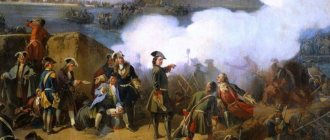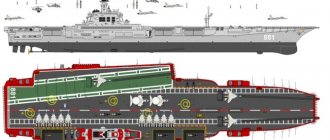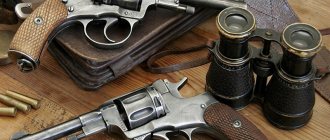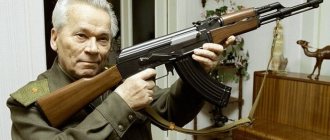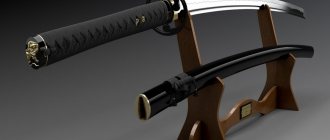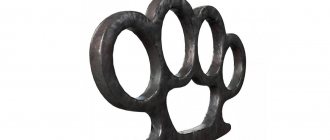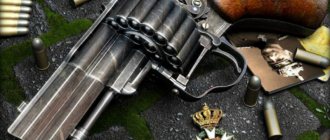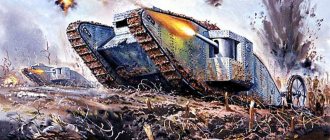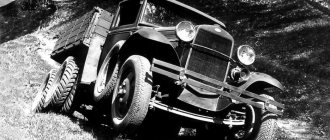Home » Cars » Russian armored cars of the First World War
CarsBooks on tank history
boroda 04/26/2019 1531
12
in Favoritesin Favoritesfrom Favorites 7
Back in 1905, Tsarist Russia could have become a world leader in the field of wheeled armored vehicles, armored cars or so-called armored vehicles, but “specific conditions” again prevented it. The Russian Military Department woke up from its blissful hibernation only with the first salvos of the Great War (World War I), which opened the gates wide to numerous foreign armored cars for reconnaissance and combat operations.
Armored vehicle for the first automobile machine-gun company with the building of the Izhora plant. 1915
History[edit]
Hussite war carts, 15th century
Precursors[edit]
During the Middle Ages, Hussite rebels in Bohemia used war carts covered with steel plate, crewed by men armed with primitive hand cannons, flails and muskets. They were placed in formation with horses and oxen in the center and the surrounding wagons chained together for protection from enemy cavalry. [5] Similar wagons were used by Henry VIII's English army and the Chinese Empire.
With the invention of the steam engine, Victorian inventors designed prototype self-propelled armored vehicles for use in siege warfare, although none were used in combat. H. G. Wells's story Land Ironclads is a fictionalized account of their use. [6]
Armed vehicle[edit]
F. R. Simms' Motor Scout, built in 1898 as an armed vehicle
The Motor Scout was designed and built by British inventor FR Simms in 1898. It was the first armed petrol engine-powered car ever built. The vehicle was a De Dion-Bouton quadricycle with a Maxim machine gun mounted on the front beam. An iron shield in front of the car protected the driver. [7]
Another early armed vehicle was invented by Royal Page Davidson at the Northwestern Military and Naval Academy in 1898 with the Davidson-Duryea carriage and the later Davidson Automobile Battery armored car.
However, these were not “armored cars” in the modern sense of the term, since they provided virtually no protection for their crews from enemy fire. Additionally, due to the low power of the engines, they were less effective than the cavalry and horse guns they were intended to complement. [ citation needed
]
The first armored cars[edit]
At the beginning of the 20th century, the first military armored vehicles were manufactured, adding armor and weapons to existing vehicles.
1902 War Car FR Simms, the first armored car to be built
The first armored car was the Simms Motor War Car, designed by FR Simms and built by Vickers, Sons & Maxim of Barrow on a special Coventry-built Daimler chassis [8] with a German built Daimler engine in 1899. [8] and a single prototype was ordered in April 1899 year [8]. The prototype was completed in 1902, [8] too late for use during the Boer War.
The vehicle had 6 mm thick Vickers armor and was powered by a four-cylinder 3.3-liter [8] 16 horsepower Cannstatt Daimler engine, giving a top speed of about 9 mph (14 kilometers per hour). The armament, consisting of two Maxim guns, was housed in two 360° turrets. [9] [10] The crew consisted of four people. Simms Motor War Car was unveiled at Crystal Palace, London, in April 1902.[11]
The earliest French armored car is the Charron-Girardot-Voigt 1902.
Another early armored car of that time was the French Charron, Girardot et Voigt 1902, presented at the Salon of Automobiles and Motorcycles
in Brussels on March 8, 1902. [12] The vehicle was equipped with a Hotchkiss machine gun, and with 7 mm armor for the gunner. [13] [14]
One of the first armored combat vehicles with four-wheel drive (4x4) and a partially enclosed rotating turret was the Austro-Daimler Panzerwagen, built by Austro-Daimler in 1904. It was armored with 3–3.5 mm thick curved plates above the hull (space and engine drive) and had a 4 mm thick domed rotating turret which housed one or two machine guns. It had a 4-cylinder 4.4-liter engine producing 35 hp, providing average off-road performance. It should be noted that both the driver and co-driver had adjustable seats, allowing them to raise them to see over the engine bay roof if necessary. [15]
Austro-Daimler four-wheel drive armored car (1904)
The Italians used armored cars during the Italo-Turkish War. [16] During World War I, a variety of armored cars appeared on both sides and were used in different ways.
First World War[edit]
Basically, armored cars were used by more or less independent vehicle commanders. However, they were sometimes used in larger units, up to squadron size. The vehicles were primarily armed with light machine guns, but larger units usually used multiple vehicles with heavier guns. When air power became a decisive factor, armored cars became a mobile platform for anti-aircraft guns. [17]
Belgium Minerva Armored car 1914
Rolls-Royce, Armored car 1920 template
The first effective use of an armored personnel carrier in combat was carried out by the Belgian army in August–September 1914. They placed Cockerill armor and a Hotchkiss machine gun on Minerva touring cars, creating the Minerva armored car. Their successes in the early days of the war convinced the Belgian headquarters to create an armored vehicle corps, which would be sent to fight on the eastern front once the western front was immobilized after the Battle of the Yser. [18] [19] [20]
The British Royal Naval Air Service flew aircraft to Dunkirk to protect Britain from airships. They were followed by officer vehicles, which were used to rescue downed reconnaissance pilots in combat areas. They mounted machine guns on them [21] and, as these excursions became increasingly dangerous, they improvised armor from boiler plates on vehicles provided by a local shipbuilder. In London, Murray Suter ordered “combat vehicles” based on Rolls-Royce, Talbot and Wolseley chassis. By the time Rolls-Royce armored cars arrived in December 1914, the period of mobility on the Western Front had already ended. [22] As described below, they had a spectacular birth and a long and interesting service.
More important tactically was the creation of formed armored car units, such as the Canadian Automotive Machine Gun Brigade, which was the first fully mechanized unit in the history of the British Army. The brigade was created on September 2, 1914 in Ottawa as "Motor Machine Gun Brigade No. 1" by Brigadier General Raymond Brutinel. Initially, the brigade was equipped with 8 armored cars with two machine guns. By 1918, Brutinel's forces consisted of two motorized machine-gun brigades (each with five gun batteries of eight weapons). [23] The brigade and its armored vehicles served in many battles, especially Amiens. [24]
The Rolls-Royce Armored Car was famously proposed, developed and used[25] by the 2nd Duke of Westminster. He took a squadron of these machines to France in time to make a significant contribution to the Second Battle of Ypres, after which the machines and their master were sent to the Middle East to take part in the British campaign in Palestine and elsewhere. These cars appear in the memoirs of numerous BEF officers in the early stages of the Great War - their ducal owner is often described in an almost piratical style.
Armored vehicles also took part in battles on the Eastern Front. From 18 February to 26 March 1915, the German army under the command of General Max von Gallwitz attempted to break through the Russian positions in and around the town of Przasnysz in Poland (about 110 km/68 miles north of Warsaw) during the Battle of Przasnysz (Polish: Bitwa przasnyska ). Towards the end of the battle, the Russians used four Russo-Balt armored cars and a Mannesmann-MULAG [de] armored car to break through the German lines and force the Germans to retreat. [26]
World War II[edit]
The British Royal Air Force (RAF) in the Middle East was equipped with Rolls-Royce armored cars and Morris tenders. Some of these vehicles were among the last of a batch of ex-Royal Navy armored cars that had served in the Middle East since 1915. [27] In September 1940, the company unit of the regiment, No. 2 Squadron, RAF, was transferred to General. Wavell's ground forces during the first offensive against the Italians in Egypt. Said [ by whom?
]that these armored cars became “the eyes and ears of Wavell.” During operations in October of that year, the Company was used for convoy escort, airfield defense, combat reconnaissance patrols and screening operations.
1941: A Fordson armored car waits outside Baghdad during armistice negotiations between British officials and representatives of the Iraqi rebel government.
American soldiers in an M8 Greyhound pass the Arc de Triomphe after the liberation of Paris.
During the Anglo-Iraqi War, some units under the British Mandate of Palestine [28] were sent to Iraq and operated Fordson armored cars. [29] Fordson armored cars are Rolls-Royce armored cars that received a new chassis from a Fordson truck in Egypt.
Since the Treaty of Versailles did not mention armored cars, Germany began developing them early. By the start of the new war, the German army had some highly effective reconnaissance vehicles, such as the Schwerer Panzerspähwagen
.
The Soviet BA-64 was influenced by the captured Leichter Panzerspähwagen,
before it was first tested in January 1942.
During the second half of the war, American M8 Greyhounds and British Daimler Armored Cars had turrets with light guns (40mm or smaller). As with other wartime armored vehicles, their reconnaissance role emphasized greater speed and stealth than a tracked vehicle could provide, so their limited armor, armament and off-road capabilities were seen as an acceptable compromise.
The first Russian armored car Nakashidze
During the Russo-Japanese War, retired lieutenant of the hussar regiment, Georgian prince Mikhail Alexandrovich Nakashidze, became convinced of the need to create a fundamentally new type of weapon - an armored car. The military liked the project presented in the summer of 1905, but they limited themselves to advising the inventor to assume all the costs of its production.
Prototype of the Nakashidze armored car of the French company CGV. 1905
As a result, the order for two armored cars was transferred to the French company Charron, Girardot et Voigt (CGV), which already had experience installing machine guns on light chassis. The basis of Russian armored vehicles were ordinary 37-horsepower Charron 30CV passenger cars with a gearbox set back and a main chain drive. Tall armored hulls with large windows and a rotating turret with a Hotchkiss machine gun were mounted on them, and rutted walkways were attached to the sides to overcome trenches. The fairly heavy three-ton car reached a speed of 50 km/h and had a range of 600 kilometers. Its first tests took place at the end of 1905 in France.
Mikhail Nakashidze's machine-gun vehicle being tested in Russia. 1906
The second copy of an armored car at military maneuvers in France. July 1906
So, once again, the theory of the special historical status of Russia with its “specific conditions” worked, which included the centuries-old attachment to horse-drawn carriages, the absence of large industrial enterprises and...
126000111.02.2018
The first armored car arrived in Russia in March 1906. The military tested it during the spring thaw and declared the vehicle “incapable of independent movement,” but based on the results of summer tests it was recommended to use it
"to fight the enemy's cavalry and pursue the retreating enemy."
After repairs and reinforcement of the armor, it again entered testing, but according to their results, the armored car was dismantled in 1908.
Military use[edit]
| In this section do not cite any sources . |
See also: List of military armored cars
Preserved American M3 Reconnaissance Aircraft from World War II
A modern RMMV Survivor R equipped with a battle management system, a roof-mounted Kongsberg remote weapon station, a .50 caliber machine gun, CBRN protection and rows of Rheinmetall ROSY grenade launchers
A military armored car is a type of armored fighting vehicle with wheels (four to ten large, off-road wheels) instead of tracks, and usually with light armor. Armored cars are generally cheaper and have better speed and range on the road than tracked military vehicles. However, they have less mobility as they have less off-road capability due to higher ground pressure. They also have less ability to overcome obstacles than tracked vehicles. Wheels are more vulnerable to enemy fire than tracks, have greater visibility, and in most cases have less armor than comparable tracked vehicles. As a result, they are not designed for heavy combat; their common use is for reconnaissance, command, control and communications, or for use against lightly armed insurgents or rioters. Only a few are designed for close combat, often accompanying convoys to protect soft-skinned vehicles.
Light armored cars, such as the British Ferret, are armed simply with a machine gun. Heavier vehicles are armed with an autocannon or large-caliber weapon. The heaviest armored cars, such as the German ones from World War II Sd.Kfz. 234 or the modern US M1128 mobile artillery system, mount the same guns as medium tanks.
A car built by railway workers for the Danish resistance movement at the end of World War II.
Armored cars are popular for peacekeeping operations or internal security. Their appearance is less aggressive and dangerous than tanks, and their size and maneuverability are said to be more compatible with confined urban spaces designed for wheeled vehicles. However, they have a larger turning radius compared to tracked vehicles that can turn on the spot, and their tires are vulnerable and less able to climb over obstacles and over obstacles. In addition, when there is a real fight, they are easily outmaneuvered and easily armored. The threatening appearance of a tank is often enough to deter an enemy from attacking, while a less dangerous vehicle such as an armored car is more likely to be attacked.
Many modern militaries now have their own dedicated armored car designs to take advantage of the above mentioned advantages. Examples include the US M1117 Armored Security Vehicle or the United Kingdom's post-World War II era Alvis Saladin.
On the other hand, civilian vehicles can be modified into improvised armored vehicles in a special
form. Many militias and irregular forces adapt civilian vehicles to AFVs (armored fighting vehicles) and armored personnel carriers, and in some regional conflicts these "technical assets" are the only combat vehicles available. Sometimes even soldiers of national armed forces are forced to adapt their civilian-type vehicles for combat use, often using improvised armor and weapons.
Reconnaissance vehicles[edit]
Main article: Reconnaissance vehicle
In the 1930s, a new subclass of armored vehicles appeared in the United States, known as the reconnaissance vehicle.
. It was a compact light armored vehicle that was either unarmed or armed only with machine guns for self-defense. [30] Reconnaissance vehicles were designed as dedicated reconnaissance vehicles for passive surveillance and intelligence gathering. [30] Armored cars with large-caliber weapon systems with turrets were not considered reconnaissance vehicles. [30] The concept gained popularity around the world during World War II and was especially popular in countries where intelligence theory emphasized passive observation rather than combat. [31]
Examples of armored vehicles also classified as reconnaissance vehicles include the Soviet BRDM series, the British Ferret, the Brazilian EE-3 Jararaca, the Hungarian D-442 FÚG and the American Cadillac Gage Commando Scout. [32]
Foreign armored vehicles in the Tsarist army
The basis of the five hundred wheeled combat vehicles that served in the Tsarist army were a wide variety of armored cars, which were assembled by about 20 companies in Europe and America. Of these, the most common were the armored vehicles of the famous British company Austin, which supplied Russia in 1914–1917 with 168 complete armored cars and 60 chassis for their assembly on site.
The first Austin armored cars
The main military achievement of the Austin company was the production of 480 machine-gun armored vehicles, built on the 50-horsepower chassis of the Austin 30HP executive passenger car. The first batch, sent to Russia in October 1914, consisted of armored cars with single-pitch wooden wheels, pneumatic tires and sloping upper side sheets of the cabin, behind which rotating turrets with 7.62 mm Maxim machine guns were placed next to each other. Under the floor of each of them were attached two “spare wheels” with cast tires, which were used in combat situations. In fact, the machines turned out to be too vulnerable, and in the spring of 1915 the Izhora plant began to modernize them.
The most common armored car in Russia is the Austin armored car of the first series. 1914
By that time, the Austin company had launched the production of armored cars of the second series with reinforced armor and a modernized chassis. In October they entered service with the Russian army, but also did not justify themselves.
Modified and reinforced Austin armored vehicle of the second series. 1915
At the end of 1916, the company switched to producing armored cars of the third series with bulletproof glass, a second control post and rear gable wheels. Their development in Russia was a version with diagonal towers, produced already in Soviet times.
Armstrong-Whitworth armored vehicles
These vehicles became one of the most common foreign armored cars in the Tsarist Army, equipped with hulls modified in Russia. The basis of the two options was a 60-horsepower FIAT passenger car and an English special chassis by Charles Jarrett with a power of 38 hp. A single batch of 40 armored cars, weighing 4–5 tons, arrived in Russia in the summer of 1916, but after the first battles, the vehicles of the second version were declared unsuitable for military service.
Armstrong-Whitworth-FIAT armored car during the February Revolution. 1917
It is not possible to talk about all the armored cars of those ancient times in a short article, but we will certainly return to them.
Source - https://www.kolesa.ru/article/bashennye-i-bezbashennye-russkie-broneviki-pervoj-mirovoj
Notes[edit]
- Lepage, Jean-Denis G.G. German Military Vehicles of World War II: An Illustrated Guide to Cars, Trucks, Halftracks, Motorcycles, Amphibians and More
(2007 ed.). McFarland & Company. pp. 169–172. ISBN 978-0786428984. - ^ B Bull, Stephen. Encyclopedia of Military Technology and Innovation
(2004 ed.). Greenwood Publishing Group. pp. 19–20. ISBN 978-1573565578. - ^ a b Bradford, James. International Encyclopedia of Military History
(2006 ed.). Routledge Books. pp. 97–98. ISBN 978-0415936613. - Dougherty, Martin J. Modern Weapons: Compare and Contrast: Armored Fighting Vehicles
(2012 ed.). Rosen Central. pp. 34–36. ISBN 978-1448892440. - ↑
Knighton, Andrew (July 12, 2016).
"Around the 15th Century Wagons: The Hussite Wars". warhistoryonline.com
. Archived from the original on May 6, 2022. Retrieved May 6, 2022. - "Land battleships". gutenberg.net.au
. Archived from the original on August 19, 2022. Retrieved May 6, 2022. - Macsey, Kenneth (1980). Book of records and exploits about tanks. Guinness Superlatives Limited, ISBN 0-85112-204-3.
- ^ abcde Edward John Barrington Douglas-Scott-Montagu Baron Montagu of Beaulieu; Lord Montagu; David Burgess Wise (1995). Daimler Century: The Complete History of Britain's Oldest Car Manufacturer
. Haynes Publications. ISBN 978-1-85260-494-3. - Macsey, Kenneth (1980). Book of records and exploits about tanks
. Guinness Superlatives Limited. p. 256. ISBN 0-85112-204-3. - Tucker, Spencer (1999). European powers in the First World War. Rutledge. item 816. ISBN 0-8153-3351-X.
- Armored personnel carriers from Mir
, Duncan, part 3 - Gougaud, Alain (1987). L'aube de la gloire: les autos mitrailleuses et les chars français pendant la Grande Guerre, histoire method et militaire, arme blindée, cavalerie, chars, Musée des blindés
. clause 11. ISBN 978-2-904255-02-1. - ↑
Bartholomew, E. (January 1, 1988). "Early armored cars". Bloomsbury USA - via Google Books. - Gougaud, p.11-12
- "Austro-Daimler Panzerwagen (1904)". www.tanks-encyclopedia.com
. Archived from the original on April 29, 2022. - ↑
Crow,
Encyclopedia of Armored Vehicles
, page 102 - ↑
Crow,
Encyclopedia of Armored Vehicles
, page 25 - "First World War - Belgian Armored Division in Russia". Archived from the original on October 2, 2013.
- "Foreign armored units on the Russian Front during the First World War". www.wio.ru.
_ Archived from the original on June 12, 2012. - "Archival copy". Archived from the original on May 19, 2011. Retrieved 17 February 2011.CS1 maint: archived copy as title (link)
- ↑ Band of Brigands
p 59. - ↑ World War I
- Willmott, HP, Dorling Kindersley, 2003, p. 59 - ↑
P. Griffith, p. 129 "Battle Tactics on the Western Front - The Art of Attack of the British Army, 1916-18, Yale University Press, citing the Official History 1918, vol. 4, p. 42 - Cameron Pulsifer (2007). "Armored vehicle in Canadian service", official publications
- Verdin, lieutenant colonel. Sir Richard (1971). Yeomanry of Cheshire (Earl of Chester)
. Birkenhead: Willmer Bros. Ltd., pp. 50–51. - Do Broni: Bitwa Przasnyska (Luty 1915) (To Arms: Battle of Przasnysz (February 1915)) Archived 2018-01-07 at the Wayback Machine (in Polish)
- ↑
Lyman,
Iraq 1941
, p. 40 - Lyman, page 57
- ↑
Lyman,
Iraq 1941
, p. 25 - ^ abc Green, Michael (2017). Allied armored fighting vehicles from World War II
. Barnsley: Pen & Sword Military Press. paragraph 17. ISBN 978-1473872370. - Van Oosbree, Gerard (July-August 1999). "The Dutch and Germans agree to build the Fennec light reconnaissance vehicle." Armor Journal
. Fort Knox, KY: US Army Armor Center: 34. - Jump up
↑ Chant, Christopher (1987).
Collection of weapons and military equipment
. New York: Routledge and Kegan Paul. pp. 28–38. ISBN 0-7102-0720-4. OCLC 14965544.
Development of armored personnel carriers in Russia: from the first to the present day. Part three.
Today, continuing the series of articles, we will tell a story about the formation and development of armored personnel carriers as a type of weapon in the Soviet Army. The powerful army demanded armored personnel carriers, and it got them! Since 1947, the Design Bureau of the Gorky Automobile Plant has been developing the light wheeled armored personnel carrier “Object 141” (the future BTR-40). In parallel with the Gorky engineers, Muscovites from the Design Bureau of the Engineering Committee of the Soviet Army, a group of designers led by A.F., worked on the project of a tracked armored personnel carrier. Kravtsova.
K-75 at the Armored Museum in Kubinka
They worked quite productively: in addition to the armored personnel carrier, they also developed an amphibious tank, a self-propelled gun and an armored personnel carrier (another one). But first things first. By 1949, a sample of an experimental tracked armored personnel carrier was manufactured by the Military Repair Plant No. 2 of the GBTU. The project was approved for production by a commission under the leadership of Marshal of the Engineering Troops M.P. Vorobyov, who highlighted the advantages and disadvantages of the combat vehicle.
As a base for the armored personnel carrier, the engineers used a sufficient number of previously used equipment: T-70, YaAZ-200, M2 Half-Track. The chassis was an improved tank chassis; the vehicle was driven by a two-stroke four-cylinder liquid-cooled YAZ-204B engine with a power of 140 l/s (a copy of the American GMC 4-71, which was installed on the M2). The transmission was borrowed from the YaAZ-200. The MTO of the armored vehicle was located on the right side of the front of the armored vehicle. Fuel tanks with a capacity of 220 liters provided a range of about 170 km. The control department, where the combat crew was located (the driver and gunner-radio operator, who operated the SG-43 machine gun and the 10RT-12 radio station), was located on the left side of the front part of the hull.
The troop compartment of the experimental, built model, located in the rear of the vehicle, accommodated 16 troops, who were located on folding benches. Dismounting/landing of infantry was carried out through two rear doors and the open body of the vehicle. If the landing seats were removed, the K-75 turned into a cargo transporter weighing up to 2 tons. Armament - 7.62 mm SG-43, installed in sockets throughout the vehicle; ammunition - 1,000 rounds, loaded into 4 belts of 250 rounds, and 12 F-1 grenades. The welded body of the armored personnel carrier was sheathed with armor plates up to 13 mm thick. Frontal armor – 13 mm at an angle of 50 degrees; the sides and rear of the machine are 12 and 10 mm, respectively, installed vertically; bottom – 3 mm.
The K-75 armored personnel carrier could overcome a wall up to 0.7 meters high, a level of 2.25 meters
In September 1950, the car underwent factory tests. The armored personnel carrier covered a range of about 2000 km, in particular 800 km at night. The commission under the leadership of Colonel General P.P. Poluboyarova highlighted the following advantages of the machine: rational armor inclination angles; use of components and assemblies of existing equipment; low machine silhouette (1,550 mm); small width, hence the turning radius; the ability to overcome water obstacles (albeit with the installation of a separate water cannon); light weight of the machine (empty - 7,820 kg).
The machine's shortcomings were also noted: unsatisfactory maneuverability, small vehicle capacity and insufficient power density. The K-75 was not accepted for service, but the commission did not ultimately reject the project - it sent it for revision, expressing a desire to see improvements in the vehicle, including: changing the capacity of the vehicle to 24 people, increasing the speed of movement, and the ability to independently overcome water obstacles. It was planned to produce two prototypes, but development at the IK SA Design Bureau was discontinued. The only example of the vehicle is kept in the Armored Museum in Kubinka.
BTR-40
The all-wheel drive two-axle truck of the Gorky Automobile Plant, designed back in 1938, was not put into production due to the war. Only on August 31, 1948, the car, called GAZ-63, was put into production.
GAZ-63
It was this truck, which passed state tests and surprised the management of the Main Automotive and Tractor Directorate, with its impressive cross-country ability, that served as the basis for the creation of the future BTR-40, before being adopted into service - Object 141. Two design features provided the vehicle with such record cross-country ability: equal front and rear tracks wheels; Single tires on the rear wheels. The tactical and technical characteristics for the armored personnel carrier were set by the military in 1947, i.e. a year before the start of production of GAZ - 63. An all-wheel drive wheeled armored personnel carrier with a capacity of up to 8 landing troops - that’s what the management demanded.
Simultaneously with the design and modification of the civilian truck, the development of an armored personnel carrier based on the same truck was carried out. The development was carried out by the GAZ Design Bureau under the leadership of Vsevolod Konstantinovich Rubtsov. By 1949, two prototypes were ready, differing only in the installation of a pair of KPVT and SGMB machine guns on one of them, and one SGMB on the other. Otherwise, the samples did not differ.
The open-type armored personnel carrier weighing 5,300 kg had a classic layout: the front part was the engine compartment, the central part was the control compartment, and the rear part was the troop compartment. The wheelbase of the GAZ-63 was reduced by 600 mm, becoming equal to 2,700 mm. In addition, the suspension was reinforced with four, and later eight, hydraulic shock absorbers. Since the engine compartment was booked, the designers had to arrange the engine components slightly differently. The engine of the armored personnel carrier was a four-stroke gasoline GAZ-40 boosted to 78 l/s at 3,100 rpm. The car's power reserve is 285 km. The body is welded, covered with armor plates 7-15 mm thick. The front part of the armored vehicle had the thickest armor - 11-15 mm, the sides - 8-9 mm, the rear - 7-8 mm. Initially, the sides of the vehicle at the bottom had large angles of inclination, but serial BTR-40s had vertical sides. The control compartment housed two crew members - the driver and the commander. Both had visibility through glazed hatches, which were closed in case of threat. The commander of the vehicle also served as a radio operator; for this purpose there was a tank shortwave radio station - R-113. The crew could exit and board the vehicle through doors in the lower part of the control compartment housing.
BTR-40 in its “natural habitat”
The troop compartment accommodated 8 people, who could dismount through the aft double door or through the sides. In the troop compartment, each infantryman had a seat, two clips for attaching an AK, spare parts, a first aid kit and a gas tank under the seat on the starboard side. The armored personnel carrier was armed with one SGMB (Easel Goryunova Modernized Armored Personnel Carrier) with an ammunition load of 1,250 rounds of ammunition, loaded into 5 boxes of cartridge belts. There was a special bracket for installing the DPM. Infantrymen could fire from individual small arms through loopholes.
A prototype of an armored personnel carrier (with one SGMB) went to state tests in 1949. The vehicle showed high cross-country ability, could overcome a ford up to 0.9 m deep and climb a slope up to 30 degrees steep. On April 17, 1949, Object 141 was adopted by the Soviet Army under the designation BTR-40. In 1950, mass production of armored vehicles was launched at the GAZ plant named after Molotov. Produced from 1950 to 1960. The BTR-40 armored personnel carrier, produced in many modifications and in the quantity of 8,500 vehicles, was in service with the Soviet and later Russian army until 1993, after which it was withdrawn from service.
BTR-40A
BTR-40A
In parallel with the development of a general-arms armored personnel carrier, the Design Bureau of Serial Vehicles (the secret name of the Design Bureau at the GAZ plant) was developing a special modification of the BTR-40 for air defense troops. The vehicle differed from the basic one in having two 14.5 Vladimirov heavy machine guns. The ammunition load of such an anti-aircraft gun was 1,200 rounds loaded into 24 belts. Due to a change in the size of the fighting compartment, the crew of the vehicle increased to 4 people (+ 2 loaders), but transportation of troops became impossible. The weight of the car increased from 5,300 kg to 5,600 kg. The BTR-40A was adopted by the Army in 1951 and put into production the same year.
BTR-40V
In 1956, the developers created an experimental BTR-40 with a centralized pressure regulation system (by connecting special tubes to the wheels, which, in the event of a puncture in the wheel, pumped up air, leaving the pressure constant) in the tires and with a ventilation system to ensure safety from chemical and bacteriological weapons. According to some sources, the vehicle was put into service and produced in 1957; according to other sources, it was not accepted for service.
BTR-40B
The BTR-40's first baptism of fire was the suppression of the uprising in Hungary in 1956. The vehicle was tested in battle, its advantages and disadvantages were determined. One important design feature, namely the open top of the car, was both an advantage and a disadvantage. On the one hand, if an armored personnel carrier was hit, the troops could evacuate from the vehicles as quickly as possible. On the other hand, the infantryman is vulnerable to attack from above.
Also in 1956, Gorky engineers modified the BTR-40. The vehicle, in addition to an increase in height of 130 mm, received a welded roof with 4 landing hatches covering the landing and fighting compartment.
Troop Squad 40B
The number of paratroopers was reduced to 6 people, instead of 8. The brackets for installing machine guns on the sides had to be removed. The armored personnel carrier was completely deprived of its weapons, and in return received additional loopholes in the inclined sides. Adopted into service in 1957 under the designation BTR-40B. Produced from 1957 to 1960.
BTR-40 railway (railway)
The basic BTR-40, which was equipped with flanges for movement by rail. The vehicle was not serial, however, modifications of this kind could and were carried out in army workshops.
BTR-112(Object 112)
In 1949, in the city of Sverdlovsk, at the Ural Transport Engineering Plant, an armored personnel carrier based on a tank was developed, or rather, a self-propelled gun - SU-100P. The group of Sverdlovsk engineers was led by Lev Izrailevich Gorlitsky, the legendary designer and creator of the SU-85/100/122 machines.
Object 112, Kubinka
The armored personnel carrier was developed and released in a short time - in the same 1949. The vehicle differed from the “donor” (SU-100P) by an extended base (6,460 mm +640 mm = 7,100 mm) and an increase in rollers - there were 7 of them instead of 6. The body of the vehicle was welded, open type, made of armor steel 15 mm thick Therefore, the armor is bulletproof/fragment-proof. The layout of the vehicle has undergone virtually no changes: the front part of the hull housed the logistics department and the control compartment. The armored personnel carrier was driven by a V-shaped diesel engine V-105-B with a maximum power of 400 l/s at 2,000 rpm. The engine allowed a car weighing 18,200 kg to accelerate to a maximum speed of 65 km/h. Power reserve – 300 km. The object did not know how to swim, but it could overcome a ford up to a meter deep.
A huge troop compartment occupied the rest of the hull. Crew - 3 people: driver, vehicle commander, gunner-radio operator. The landing force was 25 people, disembarking and landing was carried out through a special aft door. It is worth noting that the large capacity of the vehicle was due to one of the trial concepts in the development of armored personnel carriers - “platoon”. That is, every country designing and producing armored personnel carriers tried to reduce the number of already expensive vehicles by increasing capacity.
As a striking example, the American M-44 “Doughboy's Friend” with a capacity of up to 27 people
The Soviet Object 112 was armed with two machine guns - a 14.5KPVT in an open cupola with 500 rounds of ammunition and a 7.62 SG-43, mounted on a special bracket on the right side of the vehicle and having 500 rounds of ammunition. The only prototype of the machine produced did not even reach factory testing. Object 112 is kept in the Armored Museum in Kubinka.
K-78
The fate of this project was closely connected with the fate of amphibious tanks. In the same 1947, OKB IK SA was developing a number of amphibious vehicles (the aforementioned K-75, amphibious transporters and an amphibious tank). At the same time, with competitors in the “place” of the Soviet armored personnel carrier, there was a “battle to the death” between two projects of amphibious tanks: Object 740 (joint development of engineers from VNII-100 of Chelyabinsk and Leningrad) and K-90 (development by the same engineers under the leadership of A.F. Kravtsov OKB IK Soviet Army). In case of “victory” in this “race” of amphibious tanks, the opponent immediately secured a place in the niche of armored personnel carriers for his “brother” - the project of an amphibious armored personnel carrier based on the “winning” tank. It so happened that the Leningrad-Chelyabinsk Object 740, adopted for service as the PT-76, won. The Object 750 will be created on the basis of this vehicle.
The vehicle, developed on the basis of the K-90 amphibious tank from 1949 to 1950, was ready in metal in 1950. The armored personnel carrier, which has much in common with the tank, inherited almost all the design features of the “donor” and the previous project - K-75. The chassis of the armored vehicle is a modified tank, the engine and transmission are from the YaAZ-200. Power reserve - up to 250 km. The MTO occupied the entire forward part on the starboard side. The control department, in which the driver-mechanic was located, was located to the left of the MTO. Behind the mechanic was the vehicle commander’s seat, equipped with a 10RT-12 and SG-43 radio station. The ammunition load was 1,000 rounds in four loaded belts.
Boarding an armored personnel carrier
The troop compartment accommodated 22 people, disembarkation/embarkation of which was carried out through a special hinged door in the stern or through the open top. On the sides of the vehicle there were two special brackets for attaching machine guns. The troop compartment turned into a cargo compartment when the seats were folded. This department had everything to transform the K-78 into a regular transporter: winches for securing artillery, shelves for transporting boxes of ammunition. The payload for the armored personnel carrier was about 2,500 kg, and the vehicle did not lose buoyancy. In turn, the armored vehicle was driven through the water by two special propellers located in the aft tunnels. The vehicle's stability afloat was ensured by a special hull that had more in common with a ship than with a land vehicle. The design of the machine was reinforced with two power frames, which ensured proper rigidity. Bulletproof/fragmentation-proof armor for the K-78 was provided by armor up to 15 mm thick. The greatest thickness of the armor in the frontal part is 15 mm, the body is 10 mm, and the bottom is 6 mm.
From May 19 to June 26, the armored personnel carrier began to undergo military tests. Based on the test results, the commission decided to continue improving the armored vehicle and correct the shortcomings inherent in the K-78, including: inconvenient placement of the landing party, smoke-filled control compartment. The structurally modified armored personnel carriers went to test sites in 1952; by October, work on the vehicle was curtailed due to the adoption of the PT-76 and the development of the Object 750. The only surviving copy of the K-78 is stored in Kubinka.
BTR-152
At the time when the Gorky team was working on their “Object 141” based on the GAZ-63, work on the creation of a heavier armored personnel carrier “Object 140” was carried out at the Stalin Plant. OKB ZiS, under the leadership of Boris Mikhailovich Fitterman, designed its armored vehicle based on its own truck, the ZiS-151.
ZiS-151
The three-axle vehicle with a huge payload of 4 tons was perfect for creating a heavy armored personnel carrier. The developers, not constrained by either the funds or the desire to create a successful car, began work in 1947. The vehicle, like its base, had three axles, but with the exception that the rear wheels were single-wheeled, unlike the ZiS-151. Initially, the designers were given the task of creating two unified heavy armored personnel carriers.
ZiS-153
One was supposed to be based on the 3iS-152 chassis (base with rear single wheels), the second - on the ZiS-153 chassis (base with a wheel-tracked propulsion unit). But, later, during testing, the wheeled version of the armored personnel carrier will show better cross-country ability than its rival with a wheeled-tracked propulsion unit, so only the wheeled armored personnel carrier will go into production. The basis of the 8.7-ton armored personnel carrier, unlike most armored vehicles “before”, was not the frame, but the armored hull itself. It was on it that all the main components of the machine were attached. The body was made of armor steel with a thickness of 4 to 13 mm, i.e. provided bulletproof and anti-fragmentation armor. The front of the hull carried 13 mm of steel, the sides – 8-10 mm, the stern – 9 mm, the bottom – 4 mm. The layout is classic: in the front is the logistics compartment, in the middle is the control compartment and fighting compartment, and in the back is the landing compartment. The engine is a six-cylinder petrol ZIL -123V with a power of 110 hp at 3,000 rpm. Coupled with a 6-speed gearbox, the car could reach a maximum speed of 65 km/h. The control compartment housed the entire crew: the driver and commander of the vehicle. The base radio station of the vehicle was 10RT-12. The crew exited the vehicle through the side doors. Troop compartment for 17 people. The landing force was located on 2 longitudinal (along the sides) benches. The landing force could dismount/land through the aft door or by “jumping” over the sides of the hull. Armament - 7.62 mm SGMB with 1,250 rounds of ammunition (5 boxes with belts of 250 rounds each, one loaded). The car went for testing at the beginning of 1950, which it passed successfully. On March 24, 1950, the Object 140 armored personnel carrier was adopted by the Soviet Army under the name BTR-152.
BTR-152A
A modification of the heavy armored personnel carrier for air defense forces was developed in 1951. It differed from the base vehicle in the installation of a twin 14.5 mm KPV with an ammunition load of 1,200 rounds. Unlike its “younger brother,” the BTR-40A did not gain such popularity in the Soviet Army, but due to its large size it could carry troops. The crew of the vehicle increased to 3 people: driver, vehicle commander, loader.
The landing force was reduced to 6 people. Otherwise, the armored personnel carrier had the characteristics of the base vehicle. Entered service in 1952, produced at the Stalin Plant until 1955.
BTR-152D
Modification for air defense troops. The vehicle is completely identical to the BTR-152A, differing only in the installation of a quadruple installation of ZPTU-4 KPV machine guns. The armored personnel carrier, developed in 1952, did not go into production, and was produced in a series of 4 vehicles.
BTR-152V
An attempt to apply a tire pressure regulation system was made back in 1953 by engineers from the ZiS Design Bureau under the leadership of chief engineer Vitaly Andreevich Grachev. An experimental version of the vehicle was ready by 1954, when in June the vehicle was shown in motion through a swamp personally to the Minister of Defense of the USSR - G.K. Zhukov. The armored vehicle, which had adjustable tire pressure, easily passed this test, so the developers received approval for production. The first batch of 20 vehicles by order of G.K. Zhukova participated in the exercises of the Belarusian Military District, where she showed excellent cross-country ability. Therefore, the car was put into mass production in 1955 at ZiS, where it was produced until the end of 1959.
It is worth noting that this was the world's first production car with tire inflation. Experience with the BTR-152V has shown that the tire pressure regulation system is a vital function for any wheeled vehicle.
BTR-152V1
A vehicle similar to model “B”, equipped with a TVN-2 night vision device and an improved tire pressure regulation system. Developed by the ZiL design bureau under the leadership of V.A. Grachev in 1957. The armored personnel carrier was put into production by the Likhachev plant (1957-1959), and was later produced at BAZ facilities (1960-1962).
BTR-152K
After the events in Hungary in 1956, not only GAZ engineers were forced to urgently work on modifying their brainchild with a closed roof. In the shortest possible time, in less than 3 months, by 1957 ZiS produced a batch of BTR-152 with a closed body. The BTR-152K received a roof made of 8 mm thick steel, which contained 3 hinged covers for landing troops. The number of troops transported decreased to 13 people. This modification received additional loopholes and 4 brackets for attaching the SGMB machine gun to the hinged hatches. The vehicle was put into service in the spring of 1957 under the designation BTR-152K. The production of the armored personnel carrier was established at the Likhachev Plant (1957-1959), and later transferred to the facilities of the Bryansk Automobile Plant (1960-1962).
BTR-E152V
The serial BTR-152 proved to be a reliable and good vehicle. Over the years of production, many design flaws and flaws have been eliminated. But, nevertheless, the military was not satisfied with the situation with the vehicle’s cross-country ability, as well as the inability to overcome enemy trenches with a width of more than 0.9 m. The wheel inflation system introduced in modification B, and later B1, corrected the situation with cross-country ability, but not with overcoming the ditch . Then in 1957, the designers of OKB ZiL (formerly ZiS, renamed “ZiL” after 1956) under the leadership of V.A. Grachev (the creator of the 152B modification) approached solving problems in a more than original way.
The first Object received three equally spaced axes. The vehicle gained excessive controllability, so in the built BTR-E152V model, only the first two axles were made controllable. The armored vehicle was also equipped with pneumatic power steering and special wide tires (the rim was widened) and a wheel inflation system (through the wheel hub). In addition to these structural changes, the base of the armored vehicle received a significant increase in length (from 3,880 m to 4,526 mm). The overall length has been reduced by 240 mm. The total capacity of the landing compartment was also reduced: to 14 people.
The car went for testing in the same year, 1957. At the training ground in Bronnitsy, the BTR-E152V underwent comparative tests with such vehicles as the BTR-152V, ZIL-157 (truck). The armored personnel carrier showed its best side: the ditch to be overcome increased to 2.5 meters (instead of 0.9 meters), the overall maneuverability (especially in wetlands) increased due to lower ground pressure. However, a good and successful model turned out to be not so reliable: the constant velocity joints of the middle bridge “gave weakness” and often broke. Also, when driving at a speed of more than 40 km/h, the prototype became uncontrollable.
The next prototype already had front and rear axles as driving and, at the same time, controlled. The CV joints were also replaced, which, coupled with changes to the steered axles, somewhat increased the reliability of the vehicle. However, the experienced armored personnel carrier did not immediately become a reliable vehicle: now the teeth of the main gear were breaking. After correcting the shortcomings, the object went back for testing. Now, in addition to overcoming trenches and off-road conditions, a swamp was “added” as a test. Overcoming swampy terrain is an almost impossible task for any vehicle, especially a wheeled one. This was a triumph not only for the developers, but also for the BTR-E152V. The armored personnel carrier, unlike its competitor BTR-152V, did not bog down and did not even skid.
The car, having crossed the swamp and leaving a rut behind it, returned to the start along the same route. As a fact of the phenomenal cross-country ability of this armored personnel carrier, we can add that a vehicle weighing almost 9 tons, “equipped” with special four-ply tires when adjusting the pressure to 1 kgf/cm2, left a rut 5 cm deep in the loose snow.
All these innovations and record figures did not come in vain. The armored personnel carrier with its 110-horsepower 123V was unable not only to show the previous maximum 65 km/h, but also to work normally. There was not enough torque, the engine was constantly heating up. The speed dropped to 52 km/h. Due to the lack of power and the impossibility of installing another engine without completely changing the vehicle, the three-axle armored personnel carrier was not adopted by the Soviet Army.
At the same time, the Soviet Union, in view of the growing threat to NATO, was forced to adapt to a possible European theater of operations with its many rivers. In addition to the USSR, technology was also forced to adapt to the new theater of military operations: now it was presented with another requirement - the ability to independently overcome water obstacles. Alas, none of the Soviet armored personnel carriers, in particular the BTR-152 and its modifications, met this requirement.
The BTR-152 and its modifications became one of the most popular armored personnel carriers in the world and the Soviet army. The vehicle served the Motherland until 1993, after which it was withdrawn from service.
